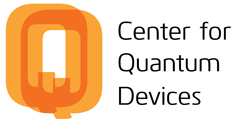Qdev seminar by Grace Pan, Harvard University
An atomic-scale approach to designing and understanding unconventional superconductors
From the fractional quantum Hall effect to the novel electronic states in twisted Moiré superlattices, the discovery of physical phenomena has frequently been guided by advances in materials synthesis and innovation. One landmark example was the 1986 discovery of high-temperature superconductivity in the copper oxides by Bednorz and Muller [1]. Since then, there have been sustained efforts to both understand the origins of this phase and create new cuprate-like superconducting materials. The nickel oxides have been a perennial candidate for a new unconventional superconductor, as copper and nickel are adjacent on the periodic table: indeed, superconductivity in a nickelate was finally discovered in 2019, in the doped "infinite-layer" compound Nd0.8Sr0.2NiO2 [2]. Here, I will discuss how we can use atomic scale synthesis via molecular beam epitaxy to expand the family of nickelate superconductors beyond the infinite-layer compound. I will focus on our discovery of the new superconducting "five-layer nickelate", Nd6Ni5O12 (Tc ~ 13 K), in which optimal cuprate-like electron filling is achieved without chemical doping [3-5]. Our work unlocks a tuning knob with which to traverse familiar phase diagrams in correlated materials and showcases the role of atomically-controlled synthesis in materials discovery.
References (include optionally)
[1] Bednorz & Muller, Zeitschrift für Physik B Condensed Matter 64, 2 (1986).
[2] D Li et al., Nature 572, 624 (2019).
[3-5] GA Pan et al., Nature Materials 21, 160 (2022).; GA Pan*, Q Song* et al., Physical Review Materials 6, 055003 (2022).; D Ferenc Segedin*, BH Goodge*, GA Pan et al., Nature Communications 14, 1468 (2023).

